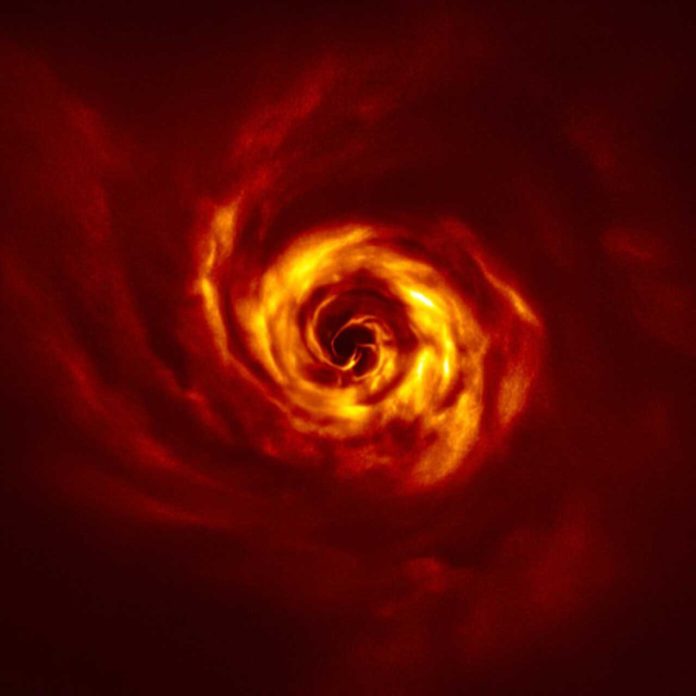A protoplanetary disk is a disk of gas (99% by mass) and dust (1%), orbiting a newly formed star, from which planets are (hypothesized to be) formed.
The mechanism of how planets form is imperfectly understood.
Gas is the dominant component of the disk; hence, it is a key driver in planets’ dynamical evolution. The timescale over which the gas dissipates sets the timescale for planet formation, yet its distribution in disks is just starting to be carefully measured.
Likewise, the chemical composition of the gas determines the composition of the future planets and their atmospheres. Still, even after decades of studying protoplanetary disks, their chemical compositions are poorly constrained gas-to-dust ratios are largely unknown.
The detailed characterizations of individual sources provide insights into the physical and chemical nature of protoplanetary disks. The star AB Aurigae is a widely studied system hosting a young transitional disk, a disk with gaps suggestive of clearing by newly forming planets.
The star AB Aurigae is located 536 light-years (plus-or-minus 1%) from the Sun; it is close enough to be an excellent candidate to study the spatial distribution of gas and dust in detail.
Using the Northern Extended Millimeter Array (NOEMA), scientists observed the AB Aur gas disk at high spatial resolution in the emission lines of CO, H2CO, HCN, and SO; combined with archival results, their dataset includes a total of seventeen different spectral features. They also mapped the gas density and the gas-to-dust ratio, finding that it was less than expected—half of the interstellar medium value or even in some places as much as four times smaller.
Different molecules were seen tracing other regions of the disk, for instance, the envelope or the surface.
When scientists measured temperature, they found that the average disk temperature to be about 39K. The chemical analysis also determined the relative abundances of the chemicals and found (depending on some assumptions) that sulfur is strongly depleted compared to the solar system value.
The planet-forming disk around this massive young star is significantly different from expectations, highlights the importance of making such detailed observations of disks around massive stars.
Journal Reference:
- P. Rivière-Marichalar et al. AB Aur, a Rosetta stone for studies of planet formation, Astronomy & Astrophysics (2020). DOI: 10.1051/0004-6361/202038549
